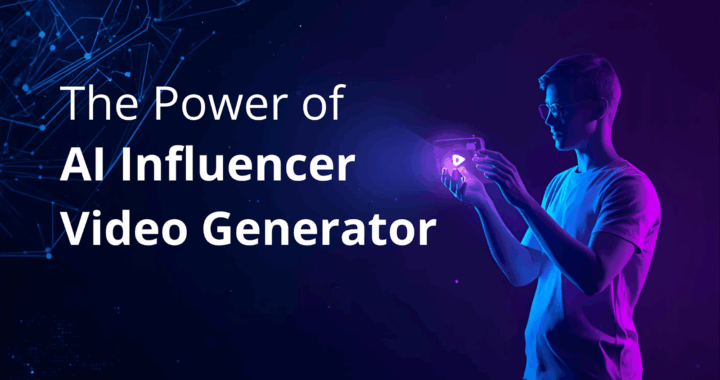From Idea to Production: Getting Leading VFX Artists Without the Wait

Creating a game that stands out in today’s competitive market requires more than just solid gameplay mechanics. Visual effects can make the difference between a game that feels flat and one that truly immerses players in its world. Whether you’re working on explosive combat sequences, magical spell effects, or atmospheric environmental details, having the right visual effects artist on your team is crucial.
Why VFX Artists Are Essential for Modern Games
Visual effects artists bring games to life in ways that static graphics simply cannot achieve. They create the dynamic elements that respond to player actions and make virtual worlds feel reactive and alive. When a player casts a spell, fires a weapon, or triggers an environmental hazard, it’s the VFX artist’s work that makes those moments feel impactful and satisfying.
The gaming industry has evolved significantly over the past decade. Players now expect high-quality visual effects even in indie titles. What was once reserved for big-budget productions has become standard across all game types. Mobile games, PC titles, console releases, and virtual reality experiences all benefit from professional visual effects work.
Beyond aesthetics, good visual effects serve functional purposes. They provide visual feedback to players, guide attention to important gameplay elements, and communicate information quickly without relying on text or UI elements. A well-designed particle effect can tell players exactly what’s happening in a split second, improving both the player experience and gameplay clarity.
The Traditional Hiring Process and Its Problems
Finding and hiring talented VFX artists through conventional methods can be a frustrating experience. Many game studios and independent developers waste weeks or even months searching for the right person. The traditional process typically involves posting job listings on multiple platforms, reviewing hundreds of portfolios, conducting interviews, negotiating rates, and handling all the legal paperwork.

One major challenge is verifying the authenticity of portfolios. With the rise of AI-generated content and portfolio plagiarism, it’s increasingly difficult to know if you’re looking at someone’s genuine work. Studios have reported spending valuable time and resources only to discover that a candidate’s portfolio didn’t accurately represent their actual capabilities.
Pricing presents another obstacle. If you’re not familiar with current market rates for VFX work, you might overpay significantly or offer rates so low that quality artists won’t respond. Different regions have vastly different pricing structures, and without insider knowledge, navigating these differences becomes guesswork.
The administrative burden adds another layer of complexity. Contracts need to be drafted, non-disclosure agreements must be signed, payment systems need to be established, and ongoing communication channels have to be maintained. For small teams or solo developers, these tasks can consume time better spent on actual game development.
What to Look for in a VFX Artist
When you hire VFX artists, understanding what skills and qualities matter most will help you make better decisions. Technical proficiency with industry-standard software is obviously important, but it’s not the only consideration. The best VFX artists combine technical skills with artistic sensibility and strong communication abilities.
Experience with your specific game engine matters significantly. An artist who knows Unity inside and out might need time to adapt to Unreal Engine, and vice versa. Real-time VFX work for games differs substantially from cinematic VFX work, so prioritize candidates with relevant gaming experience.
Here are key qualities that separate good VFX artists from great ones:
- Strong understanding of timing and motion principles to create effects that feel natural and impactful
- Ability to work within technical constraints like polygon budgets and texture memory limitations
- Experience optimizing effects for performance without sacrificing visual quality
- Good communication skills to understand creative direction and provide updates
- Portfolio showing variety in styles and effects types relevant to your project
- Problem-solving abilities when technical or artistic challenges arise
Style compatibility is equally important. An artist who excels at realistic military shooter effects might not be the best fit for a whimsical fantasy game. Review their portfolio carefully to ensure their aesthetic sensibilities align with your project’s vision.
Pre-Vetted Talent vs. Open Marketplace Hiring
The freelance marketplace landscape offers two primary approaches to finding VFX artists. Open marketplaces give you access to thousands of potential candidates, but you’re responsible for all the vetting, verification, and qualification work yourself. Pre-vetted talent platforms do much of this legwork in advance, presenting you with candidates who have already been screened for quality and authenticity.
Pre-vetted platforms typically have experienced art directors or industry professionals review portfolios before artists are accepted. This means you’re starting from a pool of qualified candidates rather than sorting through everyone who claims to have VFX skills. The time savings can be substantial, especially for studios without dedicated HR resources.
These platforms often handle the administrative aspects as well. Contracts, payments, and communication tools are built into the system, reducing the paperwork burden. Some platforms even offer dispute resolution services if problems arise during a project.
The trade-off is that pre-vetted platforms may have smaller talent pools and sometimes charge service fees. However, for many studios, the time saved and risk reduced make these costs worthwhile. When you need to hire VFX artists quickly for a time-sensitive project, having immediate access to verified talent becomes invaluable.
Budget-Friendly Options Across Different Regions
VFX artist rates vary dramatically depending on geographic location, experience level, and project complexity. Understanding these variations helps you budget appropriately and find talent that fits your financial constraints without sacrificing quality.
Here’s a breakdown of typical hourly rates by region:
| Region | Average Hourly Rate | Experience Level |
| United States | $55 – $80 | Mid to Senior |
| Western Europe | $35 – $55 | Mid to Senior |
| Eastern Europe | $25 – $40 | Mid to Senior |
| Latin America | $20 – $35 | Mid to Senior |
| Asia | $15 – $30 | Mid to Senior |
These rates represent general ranges and can vary based on specific circumstances. A highly specialized senior artist with credits on major titles will command premium rates regardless of location. Similarly, artists with niche skills like procedural generation or advanced shader work may charge more than these averages suggest.
Geographic diversity in hiring offers more than just cost savings. Different regions bring different artistic perspectives and approaches to problem-solving. A diverse team can produce more creative and innovative results than a homogeneous one.
When budgeting for VFX work, consider the total project scope rather than just hourly rates. A more expensive artist who works efficiently might cost less overall than a cheaper artist who takes longer to achieve the same results. Factor in revision rounds, communication overhead, and the potential need for technical support when calculating true project costs.
Streamlining Your Hiring with the Right Platform
Modern hiring platforms have transformed how studios connect with freelance talent. The best platforms offer features designed specifically for the game development industry, understanding the unique needs and workflows of game production.
Smart search functionality allows you to find artists by specific criteria. Instead of manually browsing hundreds of portfolios, you can search by art style, software proficiency, geographic location, or even upload reference images to find artists whose work matches your vision. This targeted approach dramatically reduces search time.
Consider these features when evaluating hiring platforms:
- Portfolio verification to ensure authenticity and prevent AI-generated submissions
- Real-time availability indicators showing which artists can start immediately
- Transparent pricing with clear rate cards and no hidden fees
- Built-in project management tools for tracking progress and milestones
- Secure payment systems with escrow protection for both parties
- Review and rating systems providing insight into past client experiences
The right platform essentially becomes a partner in your hiring process. Rather than managing everything yourself, you leverage tools and systems designed to make hiring faster, safer, and more efficient.
Integration with your existing workflows matters too. Some platforms offer API access or direct integrations with project management tools you might already use. This seamless connectivity means less context-switching and fewer manual updates across multiple systems.
When you hire VFX artists through a well-designed platform, you’re not just finding talent faster. You’re also reducing risk, improving communication, and freeing up time to focus on what you do best, which is creating great games. The initial time investment in finding the right platform pays dividends throughout your project and for future hiring needs.

 The Power of AI Influencer Video Generator
The Power of AI Influencer Video Generator  Why Guaranteed Rankings Are Possible with the Right Optimization Framework
Why Guaranteed Rankings Are Possible with the Right Optimization Framework  The Legal Status of International Betting Platforms in India
The Legal Status of International Betting Platforms in India